Totally stoned: Abbott Miller on a Pentagram-designed Rolling Stones survey
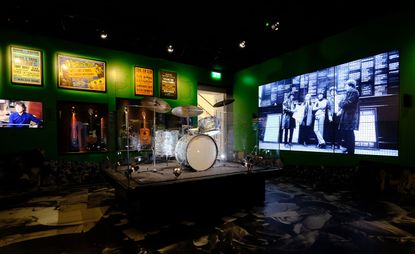
The rock-n-roll retrospective is big business these days.
Whether that's a good thing depends on how one values the validity of shifting pop stars and music into art world and gallery contexts. London's Victoria and Albert Museum hit critical pay dirt with their expansive and impeccably realised David Bowie exhibition (largely a result of the great man's chameleonic, discipline-straddling practice and unerringly singular vision). But for every Bowie there's a Björk, whose 2015 retrospective at MoMA was a mess – a brilliant artist sold short by the cloying reverence of her curators.
Safe to say, increasingly-creaky rock'n'roll titans The Rolling Stones will be looking to channel the success of the former in 'Exhibtionism', a sprawling retrospective at London's Saatchi Gallery – the largest survey of its kind ever staged by an artist or band.
Size isn't everything, of course, and for Wallpaper* there's greater shakes here in the fact that the show has been put together by the influential design firm Pentagram: specifically company founders William Russell (in London) and Abbott Miller (New York).
'Working closely with the band and curator Ileen Gallagher, we approached the space as if it were a set list for a concert, viewing it as a performance rather than an exhibition,' explains Russell of the show's conception. 'There is a range of tempos, sensations and emotions that build into one orchestrated experience: it is tactile, authentic, glamorous, messy, and suffused with the sounds and images of the band.'
The offering – delineated into 'chapters' – is broad, to say the least. In ephemera alone, the show features 500 items spanning instruments, costumes, personal documents, unseen video material, original album artwork and more. Themed spaces include 'Ladies & Gentlemen', an introductory audio visual projection installation exploring the breadth of the band's cultural impact; a recreation of the band's first squalid apartment, Edith Grove in Chelsea; and self-explanatory 'Recording' and 'Film' galleries.
Further rooms delve into the band's deployment of art, design and sartorial influence, a collection of never-before-seen items drawn from the Stones' archive seguing into a gallery space holding works by Warhol, Richard Hamilton and Ralph Steadman; while the she show's defacto finale is the 'Performance' space, providing a Stones POV film of the band in concert, as well as a 3D video of the group in action, capturing the raw magnetism that dragged them from diligent London blues hounds to global cultural behemoths.
Preceding the show's opening, Wallpaper* caught up with Abbott Miller to dicuss Pentagram's involvement in the project, breaking the increasingly workaday retrospective mould and harnessing the energy of the super fan.
W*: How did Pentagram become involved in the project? Is this the first project of its kind yourselves or the firm have been involved with?
We were invited based on previous experiential/exhibition design projects, some of which dealt specifically with popular music (a show on John Lennon which was a close collaboration with Yoko Ono, a show on the history of rock and roll style, a show on the relationship between art and television, and the design of the permanent installations of the Harley-Davidson Museum). While we’ve done many retail environments and exhibitions, this one is unique because of the extensive integration of sound, media, and lighting, which gives it a heightened theatrical quotient.
In conceiving the show, what level of symbiosis was at play between Pentagram, the band and Ileen Gallagher? Was the process of pulling the show together truly collaborative?
It was immensely collaborative, involving a really enjoyable dialogue between the producers, the curator, the band, and ourselves. There were key moments of review with the band where they were able to give a gut reaction to the design, to the selection of objects, and to the use of songs and media.
This was probably the best aspect of the project: we knew the band wanted to be involved, and the producers and curator had created a clear thematic approach prior to our involvement, but it was the way these layers built into a more and more immersive environment that made this a really satisfying process. Mick Jagger in particular has a keen sense of the experience as constructing a portrait of the band, so he was naturally very engaged, at times critical, at times very affirming. This feedback among all members of the creative team is what gives the show its unique rhythm of raw and polished moments, between things that are very tactile and authentic, and those that are more glossy and refined.
The band’s longstanding lighting designer Patrick Woodroffe was also a key player in providing feedback, as well as enabling the integration of lighting that lends the show a theatrical drama.
These kind of multifaceted museum/gallery-based music retrospectives are becoming more common (see Bowie and Bjork as good and bad examples). In terms of design, how is this show pushing the envelope? What does it do that others haven’t?
I think the exhibition is distinctive for providing both visceral/tactile moments that pull from theatrical experience as well as more artifact-based moments. The thematic structure allows us to combine these two aspects of what an exhibition can deliver, and the fact that we’ve designed the spaces to be distinct (in terns of the approach, the design language, and the emphasis on objects vs experiences) makes this unique. The 'chapter' construction liberated us and I think means the experience is dynamic for the audience.
Where do you think it best succeeds?
I think it succeeds in being completely in sync with the curatorial and editorial goals: the design really supports the storytelling.
What are your personal highlights?
I think the 'Recording' gallery is very interesting in resolving the need to show meaningful artifacts but to put them in a context that imbues them with meaning. This space manages to talk about three distinct studio environments that were crucial to the band’s creative development while also providing interactive elements that are genuinely engaging. On top of that we also incorporate a kind of 'super-fan' moment around the guitars. But the 'Style' gallery is a satisfying visual blast as well.
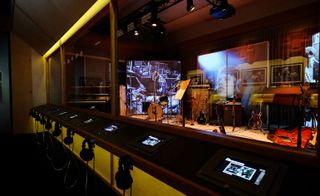
The show was collaboratively conceived by the band, curator Ileen Gallagher and Pentagram's Abbott Miller and William Russell
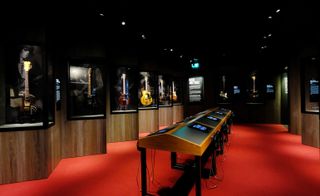
The offering – delineated into 'Chapters' – is broad, to say the least; in ephemera alone, the show features 500 items spanning instruments, costumes, personal documents, unseen video material and original album artwork

'I think it succeeds in being completely in sync with the curatorial and editorial goals: the design really supports the storytelling,' Miller tells Wallpaper* of the planning behind the show
INFORMATION
'Exhibitionism' is on view until 4 September. For more information, visit the Saatchi Gallery's website
ADDRESS
Saatchi Gallery
Duke Of York's HQ
King's Road
London, SW3 4RY
Wallpaper* Newsletter
Receive our daily digest of inspiration, escapism and design stories from around the world direct to your inbox
-
 Ama Bar, in Vancouver, is sexy and a little disorienting
Ama Bar, in Vancouver, is sexy and a little disorientingAma Bar features ‘Blade Runner 2049’-inspired interiors by &Daughters
By Sofia de la Cruz Published
-
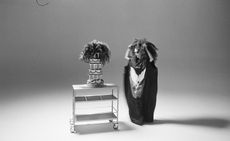 Kembra Pfahler revisits ‘The Manual of Action’ for CIRCA
Kembra Pfahler revisits ‘The Manual of Action’ for CIRCAArtist Kembra Pfahler will lead a series of classes in person and online, with a short film streamed from Piccadilly Circus in London, as well as in Berlin, Milan and Seoul, over three months until 30 June 2024
By Zoe Whitfield Published
-
 Monospinal is a Japanese gaming company’s HQ inspired by its product’s world
Monospinal is a Japanese gaming company’s HQ inspired by its product’s worldA Japanese design studio fulfils its quest to take Monospinal, the Tokyo HQ of a video game developer, to the next level
By Ellie Stathaki Published
-
 Kembra Pfahler revisits ‘The Manual of Action’ for CIRCA
Kembra Pfahler revisits ‘The Manual of Action’ for CIRCAArtist Kembra Pfahler will lead a series of classes in person and online, with a short film streamed from Piccadilly Circus in London, as well as in Berlin, Milan and Seoul, over three months until 30 June 2024
By Zoe Whitfield Published
-
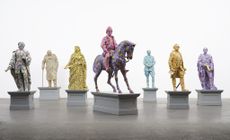 Yinka Shonibare considers the tangled relationship between Africa and Europe at Serpentine South
Yinka Shonibare considers the tangled relationship between Africa and Europe at Serpentine SouthYinka Shonibare‘s ‘Suspended States’ at Serpentine South, London, considers history, refuge and humanitarian support (until 1 September 2024)
By Tianna Williams Published
-
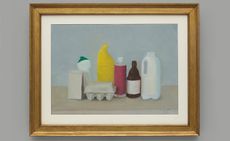 Gavin Turk subverts still-life painting and says: ‘We are what we throw away’
Gavin Turk subverts still-life painting and says: ‘We are what we throw away’Gavin Turk considers wasteful consumer culture in ‘The Conspiracy of Blindness’ at Ben Brown Fine Arts, London
By Rowland Bagnall Published
-
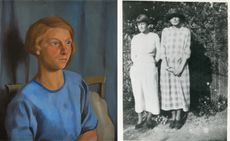 Dorothy Hepworth and Patricia Preece: Bloomsbury’s untold story
Dorothy Hepworth and Patricia Preece: Bloomsbury’s untold story‘Dorothy Hepworth and Patricia Preece: An Untold Story’ is a new exhibition at Charleston in Lewes, UK, that charts the duo's creative legacy
By Katie Tobin Published
-
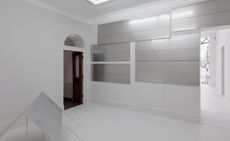 Don’t miss: Thea Djordjadze’s site-specific sculptures in London
Don’t miss: Thea Djordjadze’s site-specific sculptures in LondonThea Djordjadze’s ‘framing yours making mine’ at Sprüth Magers, London, is an exercise in restraint
By Hannah Silver Published
-
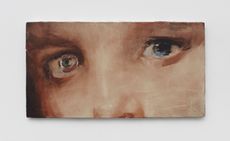 ‘Accordion Fields’ at Lisson Gallery unites painters inspired by London
‘Accordion Fields’ at Lisson Gallery unites painters inspired by London‘Accordian Fields’ at Lisson Gallery is a group show looking at painting linked to London
By Amah-Rose Abrams Published
-
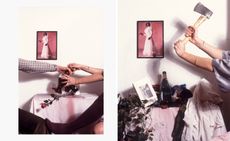 Fetishism, violence and desire: Alexis Hunter in London
Fetishism, violence and desire: Alexis Hunter in London‘Alexis Hunter: 10 Seconds’ at London's Richard Saltoun Gallery focuses on the artist’s work from the 1970s, disrupting sexual stereotypes
By Hannah Silver Published
-
 Wayne McGregor’s new work merges genetic code, AI and choreography
Wayne McGregor’s new work merges genetic code, AI and choreographyCompany Wayne McGregor has collaborated with Google Arts & Culture Lab on a series of works, ‘Autobiography (v95 and v96)’, at Sadler’s Wells (12 – 13 March 2024)
By Rachael Moloney Published